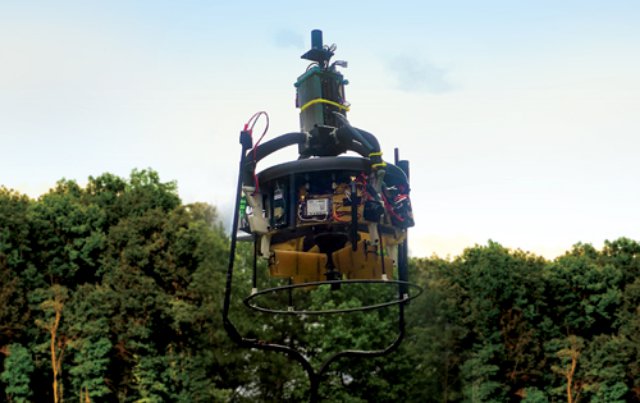A prototype for a tethered high antenna unmanned aerial vehicle could offer improved network and communications to service members and public safety officers.
Bruce Montgomery, president of Syntonics LLC, a Columbia, Maryland-based radio frequencies technology company, said the high antennas for radio communications tethered drone would not only benefit combat troops, but could aid in ship-to-shore and search-and-rescue missions.
 “It would even work for police and fire departments,” he said. “For people that communicate within a line of sight, putting your antenna up 500 feet in the air is a huge deal.”
“It would even work for police and fire departments,” he said. “For people that communicate within a line of sight, putting your antenna up 500 feet in the air is a huge deal.”
The lightweight UAV is about the size of a basketball and flies an antenna for any ultra high frequency radio as high as 500 feet while troops keep their radio down below, Montgomery said. Tethered to both the ground and a power source via a slim cable containing an optic fiber and electrical conductors, the antenna can remain aloft for days.
An operator would simply have to press the “up” button to send the drone soaring, and the “down” button to bring it back to the ground. And while the tether is designed to withstand high winds, should it snap somehow, the unmanned aircraft will safely lower itself back to the ground, thanks to a built-in battery.
Since communications are transmitted via an optic fiber, the device is jam-proof, and its ability to reach 500 feet could make it more difficult to detect, Montgomery said.
A prototype displayed at the Special Operations Forces Industry Conference in Tampa in May could only reach 100 feet and used a manual tether, but a final product will be able to achieve the optimal height of 500 feet, and have increased frequency options, an automated reel system for the tether and a small camera.
“The camera will let small units survey their immediate vicinity,” he said.
Syntonics will demonstrate the system for the Army in July, Montgomery said. The company will begin taking customer orders for the drone later this year, with an anticipated 2017 delivery period.
Source: National Defense

